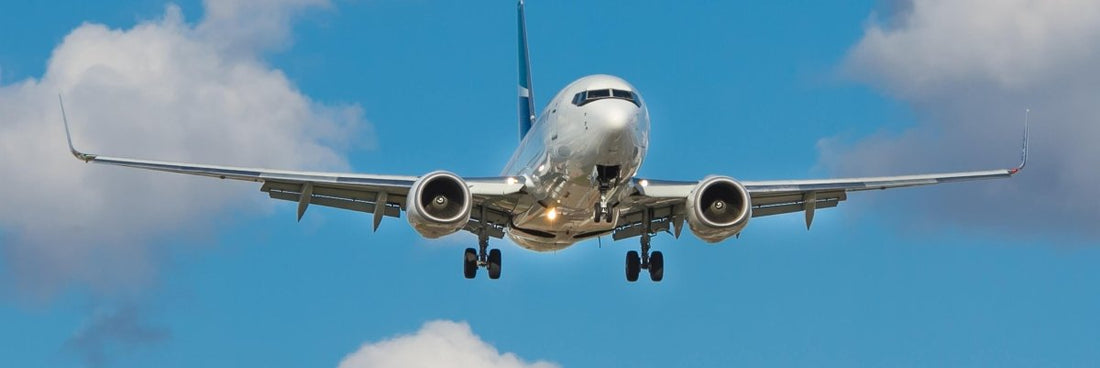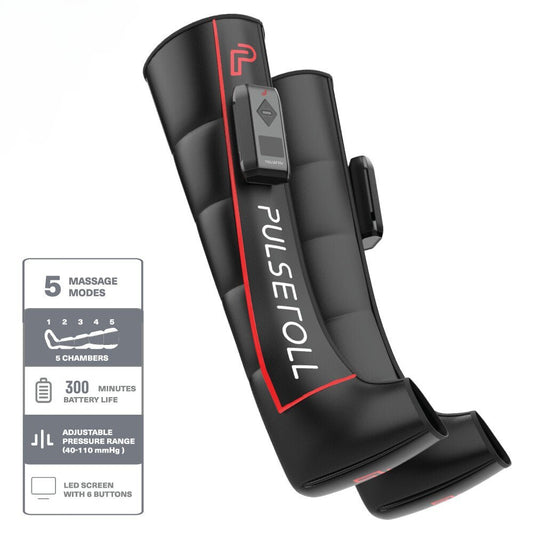You just landed after a long flight and can't wait to get home and sleep. But when you do, you end up tossing and turning with all kinds of body aches after flying, and they keep you awake half the night. The following day, you're tired and cranky – much worse than after any other travel day – even though you rested well on the plane itself.
Commonly referred to as post-flight aches, these symptoms can be excruciating and keep you from moving around generally for a few days after your trip has ended. There are multiple ways to prevent them, but unfortunately, many people aren't aware of them and thus needlessly suffer when flying around the world or across the country.
Why Does Our Body Ache After Flying?
There are a few reasons why our bodies might ache after flying.
- First, we are prone to dehydration when we fly because the air in aeroplanes is very dry. This can cause our muscles and joints to ache.
- Second, the change in air pressure when we fly can also cause our muscles and joints to ache.
- Finally, we might sit in an awkward state for a long time when we fly, which can lead to muscle and joint pain.
Why does air travel lead to such uncomfortable aches? Here are some ways to say goodbye to those aches so you can sleep like a baby when you finally get home.
1. Give Yourself a Foot Massage.
A foot massage is a fantastic way to relax and get the blood flowing. Start by soaking your feet in lukewarm water for around 10 minutes. Take a bath or enjoy a hot tub if you have one available.
If not, use a foot soak solution or even Epsom salts and soak your feet for 10 minutes. Next, thoroughly dry your feet off with a towel and then take some time to massage them.

Use long strokes from the heel of your foot to your toes and then repeat on the other side. Spend more time massaging those pressure points around the feet and ankle bones, ball of your foot, and toes. You can also use a massage gun for quick results.
2. Soak In An Epsom Salt Bath.
After your long flight, it's time for a long soak in an Epsom salt bath. Epsom salt bath is great for relaxing tired muscles and reducing soreness after a long flight. All you need to do is dissolve a cup of Epsom salts into the lukewarm water and soak for a minimum of 20 minutes. You may also add essential oils like lavender or orange oil which are known for their soothing properties.
Remember to drink plenty of water: Dehydration can exacerbate post-flight aches, so drink plenty of fluids before showering. Stay hydrated by drinking several glasses of water throughout the day with electrolytes added in if possible, and keep some by your bedside during travel and drink those up while you sleep.
3. Put Some Lotion On Your Feet
The next step is to put some lotion on your feet after you arrive at your destination or before bed. This will help with the stiffness and improve circulation in your lower extremities. You can use cocoa butter, coconut oil, aloe vera gel, or any other moisturiser you like! Ensure not to wear socks while sleeping, as they will only swell your ankles.
4. Use a Massage Gun.
One of the perfect ways to get rid of post-flight aching is by using a massage gun. A Pulseroll massage gun is a small handheld device to massage sore and tight muscles. They're perfect for those who don't have time for a full body massage or are travelling and need access to other tools like a foam roller.

The best part? You can do it at home just a few minutes before bedtime! Here's how: Hold the massager in both hands and place it over your shoulders, slowly gliding down from head to waistline. Once you've reached the middle of your back, turn around, so the massager faces outwards towards your lower back and glides up again from core to neck.
5. Eat Healthy Foods
Protein is the first step on the road to recovery. It's a fundamental building block for muscle growth and repair, so you need plenty post-flight. Foods like eggs, chicken, beef, and nuts are all excellent protein sources.
They're also rich in amino acids that help with muscle recovery. Remember carbohydrates too! They're essential to any diet because they give your body the energy it needs to work correctly. Carbohydrates are also vital for a healthy immune system, which can be compromised during travel due to long periods spent in close proximity to other people.
That's why we recommend having whole-grain alternatives at every meal while you're away from home.
6. Do Some Light Exercises
Light exercises are a great way to get the blood flowing and help your muscles loosen up. Spend 5 minutes doing light stretches, like touching your toes or stretching your arms overhead. You can also do gentle yoga poses, like downward dog or warrior pose.

If you're travelling with friends, consider getting together for a post-flight workout: It'll allow you to talk about how much fun you had on your trip while burning off some of those calories! If you want to keep it straightforward, just walk around the airport terminal once or twice before leaving.
7. Adjust Your Sleeping Position
It is essential to note that the best sleeping positions for back pain vary by person and that what may work for one human might not work well for another. Experiment with different positions until you find the most comfortable and helps alleviate your symptoms. If possible, stretch before bed: Most people are tight in their chest, shoulders, neck, lower back, and hamstrings from sitting at a desk the whole day or slouching on the plane.
The goal is to ensure you're loose enough before you sleep, so your muscles are less stiff when you wake up. For example, stretch out your arms and place them above your head while lying on your back. Hold this position for 10 seconds, then slowly release the stretch while bringing both arms down to the side of your body. Repeat this process twice, and then repeat it without holding anything above you (but keep lying flat).
8. Use a Heating Pad
A heating pad is a simple and effective way to get over post-flight aches. Lay on your back or stomach and place the heating pad on your neck and shoulders.
Heating pads are also a fantastic way to relax after a stressful day. Place the heating pad on your back, lower back, neck, or stomach for about 10 minutes and let all the tension go out of you.
9. Take a Pain Reliever
Taking a pain reliever like ibuprofen will help the pain go away faster. Make sure you do it before you eat or drink anything, or the medication will be less effective. Ibuprofen is available over the counter without a prescription, so you don't have to worry about something getting in your way and delaying the healing process.
10. Attempt The Hot and Cold Method.
Hot and cold treatments together might give relief to tight or aching muscles. Dampen a hand towel and throw it in the minibar fridge to cool (don't freeze), then use the cold towel to massage aching body regions for up to 20 minutes. After that, take a warm shower.
Types of Pain You Might Experience With Travel Aches
- Dull aches are frequently relieved by exercising and warming up the muscles.
- Tingling/asleep—Numbness caused by a pinched nerve. When the nerve is relieved of pressure, it should improve.
- Cold—When muscles contract and blood flow is restricted. Moving around helps to warm up cold muscles. This causes more blood flow to the chilly places.
- Cramps are sudden muscular spasms. Stretching the muscle should help to relieve or eliminate cramps.
- Knots form when muscle fibres do not release. Stretching and massaging the knots help relax the fibres.
- Spasms are intense cramps that come and go. Spasms should be relieved by stretching.
Tips To Avoid Body Aches After Flying
Flying on an aeroplane is a fun way to visit other parts of the world. Unfortunately, the journey from takeoff to landing doesn't always feel great. These are some tips for dealing with post-flight aches:
- Drink lots of water and try to avoid caffeinated drinks during the flight.
- Take an over-the-counter medication before the flight if you know you're sensitive to air pressure changes.
- Get up from and start walking around every hour or so during the flight. This also reduces your risk of developing blood clots.
- Stretch your arms, neck, back, and legs often when seated in your seat.
- Avoid overeating food that causes gas buildup in the intestines (such as broccoli).
- Lay out your clothes once you've arrived at your destination.
- Eat protein-rich foods like meat dishes to repair muscles faster after flying long distances.
- Keep moving once you arrive at your destination by walking through airports as much as possible.
- Wear loose-fitting clothes while travelling.
What To Do After Getting off the Plane
When the flight is finished, the recuperation process begins.
You don't want to begin your holiday on a bad note. Wu advises mobility exercises like cat or downward-facing dog into an upward-facing dog after departing the plane (maybe as soon as you check into your hotel room) to assist in moving the joints and restoring adequate muscle balance activation.

She claims that the sphinx posture or McKenzie extensions (laying on your stomach or standing) can also assist in extending your front side while compressing your posterior.
How To Get Back On Your Feet Back Faster?
After a long flight, it's common for people to experience aches and pains across their bodies. You can do these things to get back on your feet faster:
- When you land, take care of your needs before doing anything else. Drink water, use the bathroom, and change clothes - this will help you avoid constipation while reducing pain throughout your body.
- Stretch regularly to release tension and ensure you're drinking enough fluids during flights, as dehydration contributes to muscle pain after an extended period without movement.
- Be proactive about stretching out tight muscles with static stretches targeting specific muscle groups such as hamstrings, quadriceps, and calf muscles.
Conclusion
Taking a trip can be a lot of fun. You can explore new places and experience new things. But you'll need to be prepared for the stress of travelling. It may take a toll on your body.
So if you're heading on a trip soon, preparing your body for the stress of flying is a good idea. Don't forget to keep your handy massage gun to treat post-flight body aches.

We've created this helpful blog to discuss what you can do to prepare for the trip and avoid body aches after flying. By abiding by these ten tips, you'll be able to anticipate and prevent the aches and pains that typically accompany flying.
FAQs
What causes my body to ache after flying?
Travel stress and constant concern over the journey can cause stiffness. Nerves and tension can cause muscles to tense, resulting in pain following a flight.
How can you get rid of physical pains after a trip?
Minor aches and pains are usual while travelling. You could sit or stand for hours on end. Heavy luggage might be challenging to transport.
Exercise lightly to moderately. Attempt heat treatment and take over-the-counter pain relievers as directed by your doctor.
Can a flight hurt my muscles?
The most prevalent symptom is calf muscle soreness that occurs during or immediately after a lengthy airline journey. The discomfort may be misinterpreted as a muscular cramp, but although unlikely, it might even suggest the creation of a deep vein clot caused by blood sludging in static leg muscles.
Why are my legs aching after a flight?
Sitting for long periods, cramping your legs, or not moving them all contribute to poor circulation, enabling blood and fluid to accumulate in your legs, causing swollen ankles. The end consequence is, at best, discomfort, oedema, stiffness, and, most likely, varicose veins.
Is it possible to get the flu after flying?
While many people assume that reprocessed, germy air is the primary cause of illness following a plane flight. The truth is that low humidity is to blame. The humidity level in the aeroplane cabin decreases as you fly over the sky at high altitudes.
Why do I feel strange after stepping off a plane?
Disembarkment syndrome is a medical condition that can develop after a long period of mobility, such as an aeroplane ride or cruise. A neurologist often diagnoses it when the person describes a persistent bobbing, rocking, or floating feeling.
How do I recuperate from travel fatigue?
To avoid post-travel weariness:
- Practice self-care.
- Pack only a little into your trip.
- Increase your natural light exposure.
You should take your time arriving home. Allow for recuperation time. Make something special for yourself.
Is It common to become ill after travelling?
It might be upsetting to feel nauseous after travelling, but remember that this is typical. Travel, especially when done with caution, may be physically taxing.
How long does your body need to recuperate from a vacation?
According to the study results, it takes three days to get back into a flow after a week overseas and four days for two weeks off. When returning from a trip, jet lag can cause numerous sleepless nights, and it might take up to two days to get back into a regular sleep cycle.
How can you tell if you've had a blood clot after flying?
Deep Vein Thrombosis (DVT) is characterised by swelling of the leg or arm. You can't express your pain or soreness. The skin is warm to the touch or is very sensitive. A Pulmonary Embolism (PE) can then occur from DTV, when part of the blood clot breaks off and can travel to your lungs, which is potentially life threatening.
How long after landing is it possible for a blood clot to form?
Anything unusual within a week or two of a lengthy flight-leg discomfort, achiness, weight in your leg, swelling-could indicate a blood clot.
How long does it take to acquire DVT after flying?
Deep vein thrombosis is the medical name for this sort of blood clot. The longer the trip, the more increased the risk you have of developing a clot. Flights lasting 8 to 10 hours or more carry the greatest danger. In certain circumstances, the DVT will disintegrate and disappear on its own.
How do you treat post-flight inflammation?
After you arrive, many of the same measures may be used to minimise swelling: "Stay hydrated, walk around, and wear compression socks," adds Wurster. "Also, be cautious of what you consume and avoid meals heavy in salt since they might contribute to additional oedema."
What are the negative consequences of flying?
It is possible to end up with Deep Vein Thrombosis (DVT). Your blood pressure may increase. To reduce the risk for blood clots, stand up every so often on your flight, and walk up and down. Prevent blood clots by consulting your doctor, particularly before long haul flights.
You may have ear pain or temporary hearing loss. You could get dehydrated. You may also suffer from jet lag.


